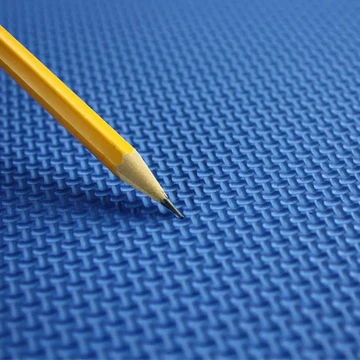Gym Flooring Hacks to Transform Any Space into a Pro Gym

When it comes to building your dream fitness zone, gym flooring often gets overlooked. Yet, it’s one of the most important investments you can make. The right flooring not only protects your equipment and space but also boosts performance, safety, and comfort. Whether you’re setting up a home gym or upgrading a commercial fitness studio in the UK, these gym flooring hacks will help you transform any area into a pro-level gym.
🔑 Why Gym Flooring Matters More Than You Think
Good gym flooring does more than just look sleek. It:
-
Protects your floor from heavy weights and equipment.
-
Reduces impact on joints during workouts.
-
Prevents slips and injuries.
-
Improves sound insulation.
-
Enhances the professional look of your fitness space.
Without the right flooring, even the best gym equipment won’t feel truly professional.
🧩 Hack 1: Use Interlocking Gym Flooring Tiles
One of the easiest ways to create a pro gym look is by installing interlocking rubber tiles. These tiles lock together like puzzle pieces, making installation quick and DIY-friendly. They’re ideal for:
-
Home gyms in spare rooms, basements, or garages.
-
Commercial gyms needing easy maintenance.
-
Temporary setups where flooring may need to be moved.
👉 Pro Tip: Choose tiles at least 15–20mm thick for weightlifting areas to absorb shock.
🧩 Hack 2: Mix Flooring Types by Workout Zone
Not all exercises need the same flooring. Instead of covering your whole space with one material, divide it into zones:
-
Cardio Zone: PVC or vinyl flooring for easy cleaning.
-
Strength Zone: Heavy-duty rubber mats for impact resistance.
-
Yoga/Pilates Zone: Cushioned foam mats for comfort.
👉 This hack makes your gym more versatile and tailored to different training styles.
🧩 Hack 3: Use Rubber Rolls for Seamless Coverage
If you’re building a commercial gym in the UK, rubber rolls are a cost-effective solution. Unlike tiles, rolls cover large areas seamlessly and are great for:
-
High-traffic fitness studios.
-
CrossFit boxes.
-
Strength training areas.
👉 Pro Tip: Look for rolls with non-slip textures for extra safety.
🧩 Hack 4: Add Shock-Absorbing Mats Under Equipment
Placing anti-vibration mats under treadmills, bikes, or squat racks prevents noise, reduces floor damage, and provides better stability. This is especially useful for apartment gyms where noise reduction is essential.
🧩 Hack 5: Don’t Forget Soundproofing
Dropping weights can be noisy. Using thicker rubber mats (20–40mm) dramatically reduces sound and vibration. For multi-story gyms, this hack is a must to keep neighbours happy.
🧩 Hack 6: Go for Easy-to-Clean Surfaces
Hygiene is key in any gym. Choose flooring materials like PVC, vinyl, or sealed rubber that resist sweat, moisture, and bacteria. Foam may feel comfy, but it absorbs moisture and wears down faster.
👉 Pro Tip: Always check if your flooring is anti-microbial coated for better hygiene.
🧩 Hack 7: Upgrade with Turf for Functional Training
Adding a strip of synthetic turf instantly gives your gym a professional edge. Perfect for sled pushes, agility drills, and functional workouts, turf makes your space look modern and versatile.
🧩 Hack 8: Install Edge Trims for Safety
Exposed edges of tiles or mats can cause trips. Adding beveled edge trims not only improves safety but also gives your gym a clean, finished look.
🧩 Hack 9: Use Modular Flooring for Flexibility
If you rent a space or move often, modular flooring is a game-changer. These portable tiles can be easily installed, removed, and reused—making them ideal for temporary gyms or multi-purpose spaces.
🧩 Hack 10: Invest in Quality Over Cheap Options
Cheap foam mats may seem attractive, but they wear down quickly. For long-term value, rubber flooring is the best investment. It lasts for years, supports heavy equipment, and keeps your gym looking professional.
📌 Bonus: A Quick Gym Flooring Checklist
Before you buy, ask yourself:
✔️ What type of workouts will I do most?
✔️ Do I need soundproofing?
✔️ Will my gym handle heavy weights?
✔️ Is the flooring easy to clean?
✔️ What’s my long-term budget?
📝 Final Thoughts
The right flooring can transform any space into a professional gym—whether it’s a small garage setup or a large fitness studio. From interlocking tiles to shock-absorbing mats and synthetic turf, these hacks ensure your gym is safe, functional, and stylish.
If you’re in the UK and want to create a pro-level fitness environment, invest in high-quality gym flooring—it’s the foundation of every great workout Visit Rubberfitfloors And get High Quality Gym Floorings All Across UK
❓ FAQs on Gym Flooring Hacks
1. What thickness is best for gym flooring?
For home gyms, 10–15mm is fine; for heavy lifting, go for 20mm or more.
2. Can I use foam mats for weightlifting?
Not recommended—foam compresses easily. Rubber mats are safer.
3. What flooring is best for garage gyms?
Rubber tiles or rolls, as they handle heavy weights and resist moisture.
4. Do I need special flooring for yoga or pilates?
Yes, cushioned foam or EVA mats are best for comfort.
5. Is rubber gym flooring worth the investment?
Absolutely. It’s durable, slip-resistant, and offers the best protection long-term.



